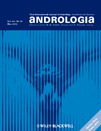Analysis of clinical data of patients with different outcomes after short-time insemination
Haibin Guo and Jinjian Yang contributed equally to this study.
Summary
The study is to analyse the clinical data of the two groups of patients with different fertilisation outcomes after short-time insemination and probe into short-time insemination indications. A retrospective study including 558 cycles of short-time insemination in our centre during January 2009 to June 2010 which were divided into two groups by the method of fertilisation, 472 cycles by IVF and 86 cycles by Re-ICSI group according to fertilisation conditions to and compare the differences between the two groups in the indexes of average female age, average male age, duration of infertility, forward-moving sperm counts, abnormal sperm rate, proportion of primary infertility, etc. The differences between the two groups have statistical significance in duration of infertility, forward-moving sperm counts, abnormal sperm rate and proportion of primary infertility (5.02 ± 3.12 versus 5.86 ± 3.35; 83.06 ± 78.55 versus 54.02 ± 61.78; 83.56 ± 5.24% versus 86.31 ± 5.26%; 56.87% versus 74.42%; P < 0.05). The discrepancy between the two groups has no statistical significance in average female age and average male age (P > 0.05). Duration of infertility, forward-moving sperm counts, abnormal sperm rate and previous pregnancy history have great significance to predict fertilisation failure, so decisions should be made on the basis of the above indexes when evaluating whether a patient should conduct short-time insemination.




